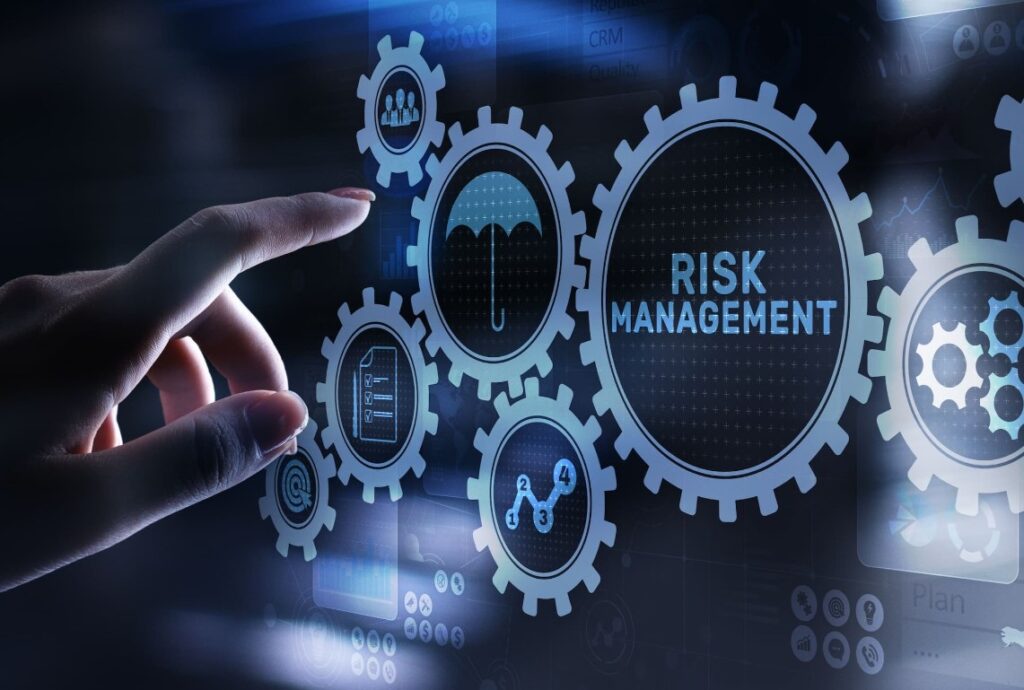
Navigating the Digital Minefield: 10 Tips for Effective Cybersecurity Risk Assessment
In today’s interconnected world, where data flows seamlessly and critical operations are digitized, the significance of cybersecurity cannot be overstated. As businesses and individuals become more dependent on digital systems, the threat landscape expands proportionally.
This underscores the vital role of cybersecurity risk assessment, a process that evaluates potential threats and vulnerabilities, allowing proactive measures to be taken.
In this blog post, we’ll delve deep into the intricacies of effective cybersecurity risk assessment and provide valuable insights to help safeguard against the ever-evolving digital threats.
Introduction to Cybersecurity Risk Assessment in the Digital Landscape

Cybersecurity risk assessment services serve as the bedrock of a robust defense strategy. They involve the meticulous process of identifying, analyzing, and prioritizing potential threats and vulnerabilities that could compromise digital assets.
As technology advances, so do the tactics of malicious actors. From data breaches that jeopardize sensitive information to ransomware attacks that hold organizations hostage, the digital minefield is complex and ever-changing.
Hence, organizations must adopt a proactive approach to cybersecurity.
Importance of Proactive Cybersecurity Measures Against Evolving Threats
The digital realm is akin to a battlefield, with cybercriminals ceaselessly devising new methods to exploit vulnerabilities. In this landscape, proactivity is key; waiting for an attack to happen can result in irreparable damage.
Employing a combination of firewalls, intrusion detection systems, and robust access controls is essential.
Regular security audits and vulnerability assessments are crucial, as they help identify weaknesses before they are exploited by malicious actors.
Identifying Potential Vulnerabilities Through Comprehensive System Analysis
Effective cybersecurity starts with a comprehensive analysis of digital systems. By conducting thorough vulnerability assessments, organizations can gain insights into the potential weak points that could be exploited by cybercriminals.
This analysis encompasses evaluating software vulnerabilities, scrutinizing hardware configurations, and assessing network architectures.
By understanding vulnerabilities, organizations can tailor their defense strategies accordingly, implementing patches and updates to fortify their systems.
Role of Employee Training in Strengthening Cyber Defense Strategies
Employees are both the first line of defense and potential weak links in cybersecurity. Even the most sophisticated security measures can be compromised through human error or negligence.
Regular training sessions on best practices, phishing awareness, and proper data handling can significantly reduce risks.
Fostering a culture of awareness is crucial for overall organizational resilience. When employees are empowered with knowledge, they become an integral part of the cybersecurity strategy.
Utilizing Advanced Tools for Continuous Threat Monitoring and Detection

The ever-evolving nature of cyber threats requires continuous monitoring. Advanced tools, such as intrusion detection systems and security information and event management (SIEM) solutions, provide real-time insights into potential breaches.
These tools analyze patterns and anomalies, enabling swift responses to emerging threats.
Continuous monitoring not only detects ongoing attacks but also helps organizations learn from each incident to strengthen their defense mechanisms.
Collaborative Approach: Involving All Stakeholders in Risk Assessment
Every division and employee within an organization must work together to secure the network. By combining different viewpoints, collaboration in risk assessment enables a more thorough knowledge of possible dangers.
A unified front against cyber threats is ensured by regular communication and cross-functional workshops that bridge the gap between technical language and useful measures.
Organizations develop a culture of shared accountability for cybersecurity by including all stakeholders.
Prioritizing Risks Based on Potential Impact and Likelihood of Occurrence
Not all risks are created equal; some have a higher potential for severe damage. Prioritization is essential to allocate resources effectively.
A risk matrix that considers the potential impact and likelihood of each threat helps focus attention on where it matters most.
This approach ensures that mitigation efforts are proportional to the risks at hand. By prioritizing risks, organizations can allocate their resources efficiently and address the most critical threats first.
Mitigation Strategies: From Encryption to Regular Software Updates

Mitigation strategies play a pivotal role in safeguarding digital assets from cyber threats. Encryption stands as a formidable shield, converting sensitive data into a complex code that’s near-impossible for unauthorized parties to decipher. Regular software updates are equally crucial, as they address vulnerabilities that hackers exploit.
By promptly applying patches and fixes, organizations fortify their defenses against evolving threats. Employing the principle of least privilege restricts access to essential functions, limiting potential damage if a breach occurs.
Multi-factor authentication adds an extra layer of security, ensuring that only authorized individuals can access sensitive systems. Network segmentation further enhances protection by isolating critical assets.
These strategies, combined with a proactive approach, create a formidable defense that deters cybercriminals and safeguards invaluable digital assets.
Developing an Incident Response Plan for Swift and Effective Actions
No defense is foolproof; breaches can still occur despite rigorous measures. Having a well-defined incident response plan is essential.
This plan outlines the immediate steps to take when a breach is detected, minimizing damage and expediting recovery.
Regular drills and scenario-based training prepare the team to act swiftly and decisively in the face of a cyberattack.
An effective incident response plan can mean the difference between containing a breach and facing extensive damage.
Compliance with Regulations and Industry Standards for Enhanced Security
Compliance with regulations and industry standards not only ensures legal adherence but also boosts cybersecurity.
Regulations such as GDPR and industry standards like ISO 27001 provide frameworks for robust practices.
Adhering to these standards fosters a security-oriented culture and demonstrates a commitment to safeguarding sensitive data.
By aligning with established standards, organizations can establish a solid foundation for cybersecurity and gain the trust of customers and partners.
Conclusion: Adapting Risk Assessment to Safeguard Against Future Challenges

In the ever-evolving digital landscape, cyber threats will continue to mutate and adapt. Effective cybersecurity risk assessment is not a one-time task but an ongoing process.
By staying informed about emerging threats, harnessing advanced tools, fostering collaboration, and maintaining compliance, organizations can navigate the digital minefield with confidence.
The journey towards robust cybersecurity involves adaptability, vigilance, and a proactive mindset – all essential components of a successful defense strategy.
As technology evolves, so must our strategies to protect against the threats of tomorrow. By consistently adapting risk assessment practices, organizations can safeguard their digital assets against even the most sophisticated adversaries.
